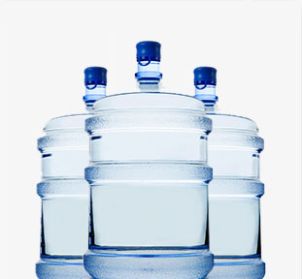
What are Forever Chemicals?

Though it sounds like a plot of a movie, people across the globe are facing an all-too-real drama: More than 12,000 toxic chemicals that break down very slowly and aren’t detectable by sight, taste or smell are showing up in the environment, food and even our bloodstreams.
The prevalence of such dangerous contaminants, which are known as “forever chemicals” for their long-lasting existence, can be both frustrating and scary. They’ve garnered the attention of government entities in the U.S. and Canada, which are working on stronger rules to address these chemicals in U.S. tap water and in Canadian drinking water, respectively.
These forever chemicals deserve your attention too. Having a good understanding of what they are and how they can impact your life can help you devise ways to reduce your potential exposure through the water you drink and the products you buy.
Why So Many Products Contain Forever Chemicals
These manufactured chemicals are officially known as per- and polyfluoroalkyl substances (PFAS). They emerged in the 1940s and have proliferated because their properties make them useful components for commercial and industrial products. They don’t degrade easily and can resist heat, water, oil, grease and stains.
PFAS chemicals are commonly used in items such as:
- Non-stick cookware
- Fire-fighting foams
- Waterproof apparel like raincoats or boots
- Stain-resistant fabrics and carpets
- Food packaging including microwave popcorn bags, pizza boxes and fast-food containers
- Building products such as paints, roofing materials and windows
Even personal care products like shampoo, dental floss and makeup can contain PFAS. The FDA notes that PFAS may be used in cosmetics “to condition and smooth the skin, making it appear shiny, or to affect product consistency and texture.”
PFOA and PFOS Are Among the Best Known PFAS Types
While there are thousands of PFAS chemicals, two of the most widely used and studied are perfluorooctanoic acid (PFOA) and perfluorooctane sulfonate (PFOS).
In the U.S., many companies began phasing out the production of PFOA and PFOS in 2000. They’ve largely been replaced by other types of PFAS, including some that actually break down into PFOA and PFOS. (In Canada, PFAS are no longer manufactured, imported, sold, offered for sale or used.)
Despite this progress, because of their longevity, PFOA and PFOS remain water-quality concerns in both the U.S. and Canada.
The Abundance of Forever Chemicals in Water
PFAS can get into water supplies when products containing them find their way into soil and surface water like lakes, ponds and rivers.* They can also be carried by rainwater that picks up PFAS from the air. These substances can travel long distances in water.
A recent study by the U.S. Geological Survey found that at least 45% of the nation’s tap water is estimated to have one or more types of PFAS. Researchers also discovered that PFAS concentrations were similar between public supplies and private wells.
In addition, the study says people in urban areas have a higher risk of PFAS exposure than those in rural areas, noting that scientists estimate that the probability of PFAS not being detected in tap water is about 75% in rural areas and around 25% in urban areas.
Separately, an environmental watchdog group had previously identified more than 2,800 locations across the U.S. that have PFAS pollution in public and private water systems.
With so many residences potentially accessing water that is contaminated with PFAS, it’s worth noting that the Environmental Protection Agency (EPA) says that “showering, bathing, and washing dishes in water containing PFAS are unlikely to significantly increase your risk.” It explains that studies have shown that only a small amount of PFAS can get into the body through skin.
Forever Chemicals in Drinking Water Can Be Harmful
Drinking contaminated water, or using it to prepare food, can be more problematic. “Ingestion is really the biggest concern,” says Gary Falkengren, Culligan’s problem water specialist. “The human body doesn’t eliminate [PFAS] very well and they don’t break down in the environment. So you want to limit your intake of these chemicals so they don’t bioaccumulate in your body.”
Indeed, although research remains ongoing, the EPA says current studies have found exposure to certain levels of PFAS may lead to adverse health effects. These include decreased fertility, developmental delays in children, increased risk of some cancers, higher cholesterol levels, and a reduced ability of the body’s immune system to fight infections.
In June 2022, the EPA announced that even near zero traces of these synthetic compounds can have adverse health effects.
You can find out if there are PFAS in water coming out of your taps. If you get your water from a municipal source, your supplier is required to send you an annual drinking water quality report called a Consumer Confidence Report (CCR). You may be able to find a copy of your report on your water system’s website or through this EPA resource. However, not all utilities are testing for this issue – and private wells would not be covered in these reports, either.
If you have a private well—or even if you’re a municipal customer seeking peace of mind about forever chemicals in water—you can hire a water treatment professional who will take a sample and send it to a certified lab for testing. You can also send a sample yourself to a certified lab. Your state should be able to refer you to a lab qualified to test for PFAS.
What if tests reveal that PFAS are present? “If you know you have PFAS in your water, you don’t want to consume it,” Falkengren says. “You can buy bottled water as temporary measure, or you can invest in a filtration system designed to address PFAS. That’s a better long-term solution.”
What You Can Do About Forever Chemicals
The good news is there are water filters for forever chemicals – but it’s important to know that not all filtration systems can reduce the most common types of PFAS. Typical refrigerator filters or filters found in pitchers, for instance, are often not a reliable solution for significant reduction of PFOA and PFOS.
One of the best options for protection against PFOA and PFOS are reverse osmosis filtration systems. Look for one that is tested and certified by an accredited third-party laboratory to NSF/ANSI 53 to reduce these contaminants, such as Culligan’s Aquasential® Smart Reverse Osmosis (RO) System with the Total Defense Cartridge or the Total Defense + Mineral Cartridge.
How Else to Avoid Forever Chemicals
Treating your home’s water with solutions that are certified to reduce PFOA and PFOS can help you feel more comfortable about the water you drink and the food you use water to prepare.
Here are other steps you can take to potentially reduce your exposure to these toxic chemicals:
- Buy PFAS-free items. This website can help you identify manufacturers that are removing PFAS from all or select products. Also, avoid products with labels listing ingredients with the words “fluoro” or “perfluoro.” Common PFAS that are used as ingredients in cosmetics, for instance, include PTFE (polytetrafluoroethylene), perfluorooctyl triethoxysilane, perfluorononyl dimethicone, perfluorodecalin, and perfluorohexane, according to the FDA.
- Consider the possibility of forever chemicals in cookware. Stop using existing pots and pans if non-stick coatings show signs of wear. Cast iron or stainless steel cookware could be ideal replacements. If you like non-stick cookware, opt for brands that are addressing PFAS (but also research potential challenges to their claims).
- Pop differently. Make popcorn on the stovetop or in an air popper rather than in PFAS-treated microwave bags.
- Don’t eat fish from waters that are contaminated with PFAS. These resources can help you identify waterways to avoid.
PFAS can be hard to steer clear of entirely because they are ubiquitous. Nonetheless, understanding the potential ramifications of the forever chemicals can help you make informed decisions for yourself and your family.
If you want to learn more about your water quality and get customized recommendations on the best solutions to bring you and family your peace of mind, Culligan is here to help. Get started by scheduling your free in-home water test and consultation today.
* Contaminants may not be present in your water.
Related Articles
FAQ: Are There PFAS in Bottled Water?
8 min read
What is PFAS Water Testing?
11 min read
Find A Location Near Me

Schedule Your Free
In-Home Water Test
Get better water in your home by scheduling an appointment with your local Culligan Water Expert.
Discover More
See All Articles

FAQ: Are There PFAS in Bottled Water? — qa-testing
Although drinking water quality has always been important, it’s a particularly hot topic these days — especially as researchers learn more about PFAS, sometimes called “forever chemicals.” These substances have […]
7 min read

Explore

Explore
Our Products

Water Softeners
With any of our soft water systems, get more out of your water-using appliances while spending less on energy and detergent.
View Products

Water Delivery
There’s never been a better time to enjoy the convenience of scheduled bottled water deliveries from the Culligan® Water Experts
View Products

Water Filtration Systems
Culligan's water filtration systems have improved water quality for thousands of families worldwide.
View Products